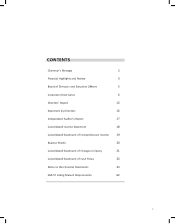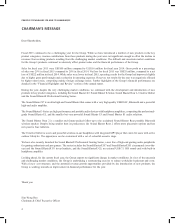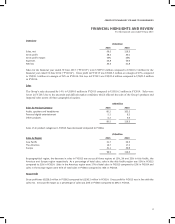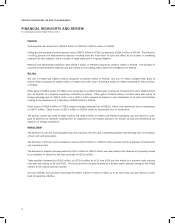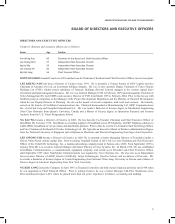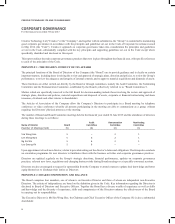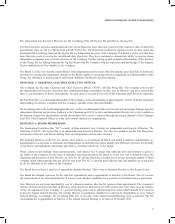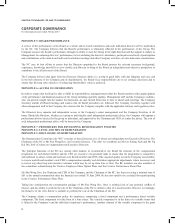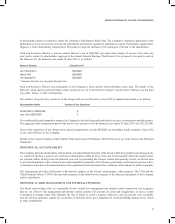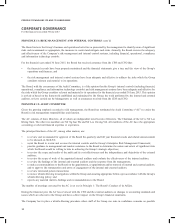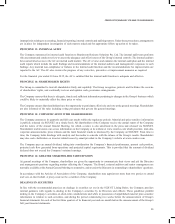Creative 2015 Annual Report Download - page 9
Download and view the complete annual report
Please find page 9 of the 2015 Creative annual report below. You can navigate through the pages in the report by either clicking on the pages listed below, or by using the keyword search tool below to find specific information within the annual report.
9
CREATIVE TECHNOLOGY LTD AND ITS SUBSIDIARIES
of performance shares to employees under the Company’s Performance Share Plan. The Company’s employees participate in the
performance review process that assesses the individual’s performance against set performance targets. Performance against these
targets is a factor determining remuneration. This seeks to align the interests of the employees with that of the shareholders.
Each non-Executive Director is paid an annual Director’s fee of S$60,000 (pro-rated where length of service is less than one
year) and is subject to shareholders’ approval at the Annual General Meeting. The Director’s fee proposed to be paid to each of
the Directors for the nancial year ended 30 June 2015 is as follows:
Name of Director Director’s Fee*
Lee Kheng Nam S$60,000
Ng Kai Wa S$60,000
Lee Gwong-Yih S$60,000
* Execuve Directors are not paid a Director’s Fee.
Each non-Executive Director also participates in the Company’s stock options and performance share plan. The details of the
Directors’ stock options and performance share awards are set out in the Directors’ Report. Non-Executive Directors are not paid
any salary, bonus, or other remuneration.
The number of top ve key executives of the Group (who are not Directors or the CEO) in remuneration bands is as follows:
Remuneraon Bands Number of Key Execuves
S$250,000 to S$499,999 2
Less than S$250,000 3
For condentiality and competitive reasons, the Company is not disclosing each individual executive’s remuneration and their names.
The aggregate total remuneration paid to the top ve key executives for the nancial year ended 30 June 2015 was S$1,323,000.
None of the employees of the Group whose annual remuneration exceeds S$50,000 are immediate family members of the CEO
or any other Director of the Company.
Details of the Creative Employee Share Option Plans and Creative Performance Share Plan are set out in the Notes to the Financial
Statements.
PRINCIPLE 10: ACCOUNTABILITY
The Company provides shareholders with quarterly and annual nancial results of the Group within the regulatory reporting periods,
i.e. results for the rst 3 quarters are released to shareholders within 45 days of the end of each quarter whilst the annual results
are released within 60 days from the nancial year end. In presenting the Group’s annual and quarterly results, the Board aims
to provide shareholders with a balanced and understandable assessment of the Group’s performance and nancial position with a
commentary at the date of the announcement of the signicant trends and competitive conditions of the industry in which it operates.
The management provides all Directors with nancial updates of the Group’s performance, when required. The CEO and the
Chief Financial Ofcer (“CFO”) also provide assurance to the Board on the integrity of the nancial statements of the Company
and its subsidiaries.
PRINCIPLE 11: RISK MANAGEMENT AND INTERNAL CONTROLS
The Board acknowledges that it is responsible for the overall risk management and internal control framework, but recognises
that no cost effective risk management and internal control systems will preclude all errors and irregularities, as such a system
is designed to manage rather than eliminate the risk of failure to achieve business objectives, and can provide only reasonable
and not absolute assurance against the occurrence of material errors, poor judgement in decision-making, human errors, frauds
or other irregularities.

